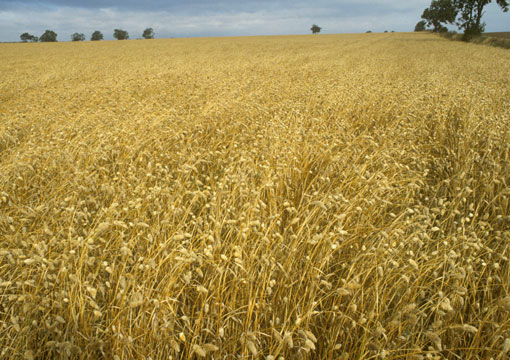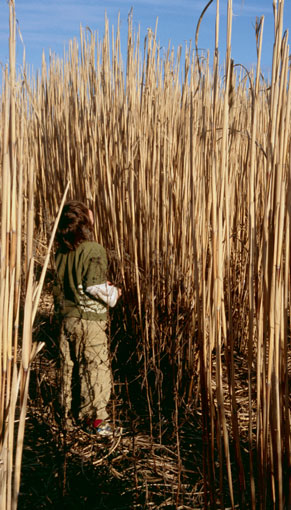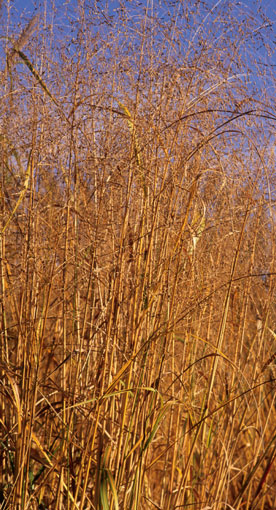4 Grasses as an energy source
There is increasing interest in using grasses as a biofuel source. Grasses grow quickly, produce a large amount of biomass per unit growing area and leave only small amounts of residue when they are burned. Typically, grasses are burned to produce heat and steam to power turbines in conventional power plants. The largest power station in the UK, Drax, currently burns 300,000 tonnes of Miscanthus x giganteus annually, alongside its usual coal supplies. Another advantage of using grasses is that many of them multiply by underground rhizomes, which means they spread quickly and generate new shoots easily. However, this can also make them invasive and difficult to control and eradicate, so they are considered by some to be weeds.


There has been interest in using mixtures of a number of plant species, including grasses, together to produce biofuel. These mixtures allow the maximum interception of light as the different plants grow at different rates. They are considered to be carbon neutral as they are perennials, which do not require re-sowing each year, and, most importantly, they can be sown on degraded agricultural land so food production is not jeopardised.

Question 17
Summarise why grasses are particularly suitable for biofuel.
Answer
Grasses grow quickly, they can produce a large amount of biomass in the area in which they are grown and when they are burnt they leave behind relatively small amounts of ash. They are also perennials that spread easily and can grow on poor soil.
Grasses which grow year on year are called perennials. Harvesting of perennial grasses for biofuel can take place anytime from late November to April. The moisture content of the leaves is highest in November meaning that the grass cannot be baled and needs to be chopped into smaller pieces which dry more easily. As time passes from November to April the grass loses leaves, thus reducing the harvestable biomass, but harvesting in April means it can be baled which costs less than chopping the grass up during harvest. Many burners used to generate heat or electricity from wood fuel can also combust bales of grass or straw. Various studies have revealed that it becomes uneconomic to transport grasses for burning as biofuels more than about 80 kilometres.
